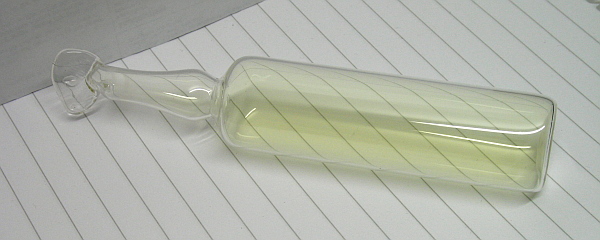Weapons of the First World War
The Beginning of Chemical Warfare

http://woelen.homescience.net/science/index.html
In 1914, there was a world war, and with that war came chemical weaponry. These chemical weapons were deadly gasses created by chemists that could burn the skin, irritate the lungs, or just flat out kill people. They created various ways to injure or kill people, so let’s get started with distinguishing them.
First off, we have Tear gas. This is a clear gas, and it can be either xylyl bromide or ethyl bromoacetate. This gas causes the people to tear uncontrollably, get irritated eyes, and if given in large amounts, can cause trouble breathing, and these symptoms all last for around 30 minutes! Next up, we have the Mustard gas. It is called mustard gas due to it’s yellow or brown color, and it smells like garlic. It causes extreme burns if it touches the skin, extreme lung damage if inhaled, and even cancer in the long run. Along with all of these, it would also cause blisters that would often become infected.
Another gas used in the war was chlorine. This gas creates a greenish cloud that causes immediate irritation in the eyes, lungs, nose, and throat on contact. If the dose was large enough, it would cause a death by asphyxiation, or in other words, suffocation. Lastly, the deadliest gas used in ww1 was 6 times deadlier than chlorine. This gas was called phosgene. It was colorless, and symptoms showed up a few days after the dose. When it starts, the infected person’s lungs would fill up with fluid, and they would slowly begin to suffocate. It would be a truly agonizing death.
All of these gasses were used heavily in ww1, and they were all later dubbed inhumane by world leaders, so the usage of them were banned in the 1925 Geneva convention.
RELATED STORIES:
https://www.sciencehistory.org/distillations/a-brief-history-of-chemical-war
https://nj.gov/health/eoh/rtkweb/documents/fs/1319.pdf
https://www.warmuseum.ca/firstworldwar/history/battles-and-fighting/weapons-on-land/poison-gas/
https://www.theworldwar.org/learn/about-wwi/spotlight-first-usage-poison-gas
TAKE ACTION:














